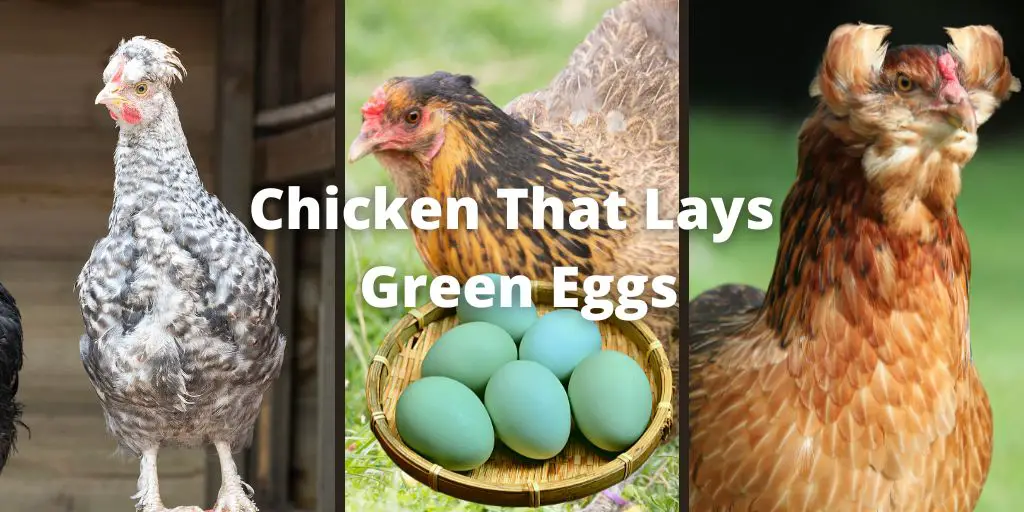Have you ever heard of a chicken that lays green eggs? It’s quite fascinating! The view of a green egg can be rather strange and mesmerizing.
A rare breed of chicken called an Ameraucana solves the mystery of the green egg-laying chicken. The eggs these chickens lay are soft pastel green, sometimes bluish-green.
They make for a great conversation piece, especially when served at brunch. To the surprise of many, several other chicken breeds lay green eggs.
This article will discuss green egg layers and what makes them so unique.
Let’s get into this:
Chicken That Lays Green Eggs
Below is the list of top chickens that lay green color eggs:
1. Isbar Chicken
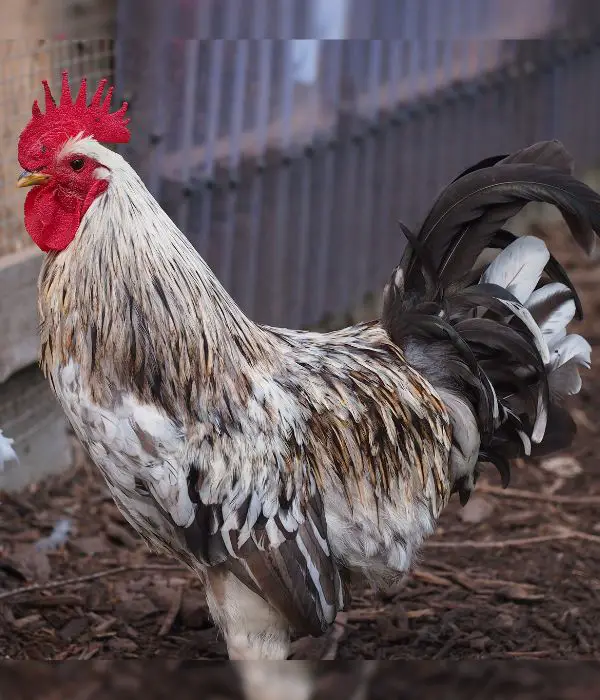
Isbar chickens lay green or blue eggs. Martin Silverudd developed Isbar chickens in Sweden in the 1950s.
They are clean-legged and have no beard. These amiable, active foragers are perfect for free-range.
Since Isbar chickens cannot produce meat, they are raised for eggs. They produce 200-230 giant eggs colored green annually.
These hardy birds lay eggs in cold weather. Isbar chickens have short earlobes, single combs, and medium-sized red wattles.
This guardian bird should be introduced to new hens carefully. They are broody but poor sitters. Isbar chickens are great foragers but need lots of space to locate food.
They live long and are hardy. Isbars are sought after for their green or blue eggs, making them attractive flock additions.
2. Easter Egger Chicken

Easter Egger chickens are popular for laying green or blue eggs. A mixed-breed chicken inherits the blue egg-laying gene from the Araucana or Ameraucana.
Due to their hybrid background, Easter Egger hybrids come in many hues and patterns.
Originating from South America, Easter Eggers are raised for their eggs. They lay 200-280 medium-to-large eggs per year. Eggs might be light green or blue.
The Easter Eggers are nice and docile. Their foraging skills and adaptability are well-known. They can survive in many climates, making them perfect for backyard flocks.
Easter Eggers are medium-sized fowl. With adequate care and supervision, they live 6–8 years.
Easter Eggers’ ability to lay green and blue eggs makes egg collections colorful. Backyard chicken keepers love them for their lovely eggs, friendliness, and adaptability.
3. Araucana Chicken
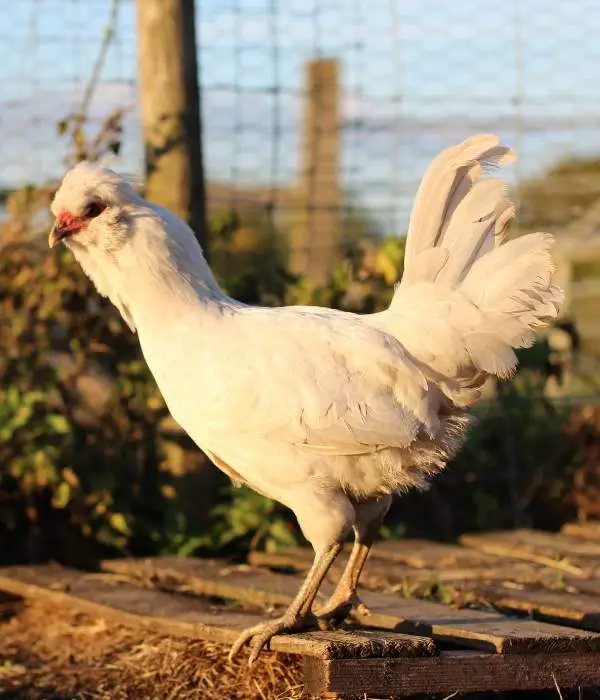
The Araucana chicken lays green or blue eggs. Originating from Chile, these chickens are named after the Mapuche people of Araucanía. Their pea comb, rumpless tail, and ear tufts distinguish them.
Araucanas are kept for their egg-laying ability. They produce 150–200 medium-sized eggs annually, with bright blue to green shells.
The Araucanas are lively, alert, and curious. They are independent and sometimes flighty. However, good care and socialization can make them amiable.
Chickens like Araucanas can survive in diverse climates. Good insulation from their thick plumage makes them appropriate for colder climates. They’re small to medium, making backyard flocks manageable.
Some Araucana hens can live longer than 6–8 years. They need a healthy diet, shelter, and frequent checkups.
Other chicken breeds cannot lay green or blue eggs like Araucana chickens. Their unusual appearance and egg colors make them popular among backyard poultry enthusiasts.
4. Olive Egger Chicken
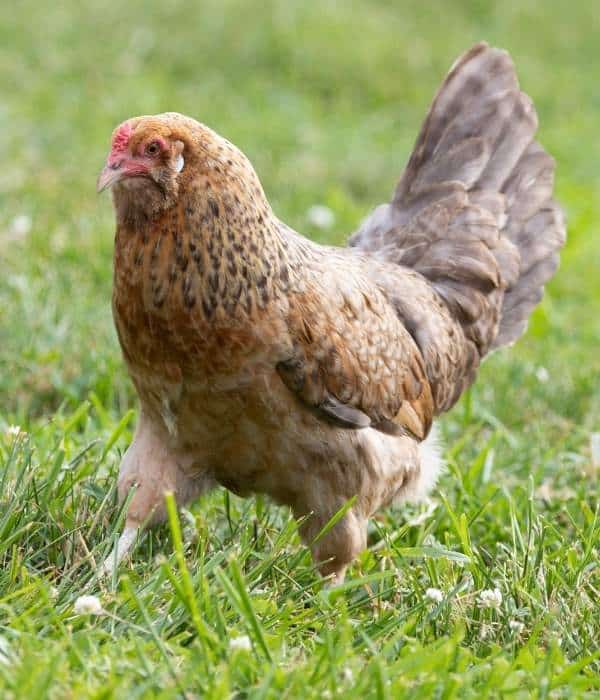
Olive Egger chickens are hybrids that lay green or blue eggs. They are a cross between a dark brown egg-laying breed like Marans or Welsummer with a blue or green breed like Ameraucana or Araucana.
Olive Eggers have different appearances and temperaments due to their mixed heritage. Their friendliness and docility make them ideal for backyard flocks and families.
The hens lay medium-to-large eggs. Egg colors range from olive green to blue. The bird’s genetics determine its shade.
Olive Eggers can lay 150–200 eggs annually, depending on genetics and husbandry.
Olive Eggers are resilient and adaptable. Their moderate size makes them ideal for small backyards.
Like other hybrid breeds, they live around 6–8 years and are given good care.
5. Green Queen Chicken
The hybrid Green Queen chicken lays green or blue eggs. With muffs and beards, these medium-sized chickens come in many hues and feather designs.
Green Queens may lay 310 eggs yearly and are bred for egg production. These nice, docile chickens are ideal for families and beginners.
Although not often bred for meat production, they are resilient birds of various sizes. Average lifespan for Green Queen chickens is 6–8 years.
They are known for laying green or olive eggs brightening any egg collection.
6. Steele Egger Chicken
This hybrid was created to offer customers larger green eggs than the traditional Ameraucana. This breed is sort after by many people because of its excellent egg-laying abilities.
The green eggs are larger and more consistent than other green egg layers. The Steele Egger is also friendly and adaptable to their environment, which is why this breed is increasing in popularity.
Steele Egger can weigh between 4 and 5 pounds. They begin laying at about eighteen weeks. They can lay up to 150 eggs in a year.
7. Sage Gem
The Sage Gem is a hybrid breed of chicken that lays sage green eggs. These beauties will also give you some best-tasting eggs you have ever tasted.
Raising this chicken breed is an exciting adventure, as they are known to be quite friendly and easy to handle.
Sage Gem chickens have a good laying pattern and can lay up to 180 eggs a year, and they begin laying at around 25 weeks. They can weigh up to 5 pounds when fully mature.
8. Ice Cream Bar or Crested Cream Legbar
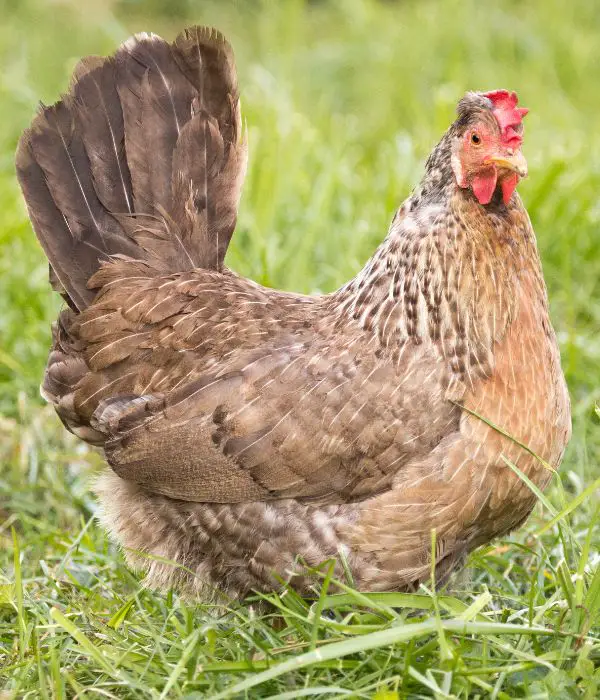
The Ice Cream Bar (ICB) chicken breed lays green or blue eggs. A specially created hybrid between a Swedish Isbar, a blue egg layer, and an English Cream Legbar, famed for its tiffany blue eggs.
The ICB is popular for its excellent foraging, high egg production, and mild temperament. The ICB produces beautiful blue-green eggs.
The medium-sized breed has cream and gray barring. Hens have salmon-spotted necks and breasts, whereas roosters have larger combs, wattles, and tails.
Due to its alertness, the ICB can be flighty. They are rare broody, and the average Ice Cream Bar lifespan is 6-8 years.
FAQs
Why do my chickens lay green eggs?
Chickens from hybrid egg-laying breeds typically lay green eggs. These hybrids have a specific anatomy that allows them to lay eggs with a unique color.
Are green eggs safe to eat?
Yes, green eggs are safe to eat. The green color in the shells of green eggs comes from a pigment called biliverdin, which is produced by the hen’s diet and genetics.
The green color does not affect the taste or nutritional value of the eggs. Green eggs are just as safe to eat as brown, white, or any other color, as long as they are handled and cooked properly.
Do green eggs have a different flavor?
Green eggs have the same flavor as eggs of any other color. The color of the eggshell does not impact the taste of the egg.
The flavor of an egg is primarily determined by the diet of the hen that laid it and the method of production (cage-free, free-range, etc.).
Some people believe green eggs have a slightly different flavor than eggs of other colors, but this is not scientifically proven and likely varies based on individual preferences.
Why would you want a chicken that lays green eggs?
People may want chickens that lay green eggs for several reasons, including:
Unique appearance: Green eggs have a unique and visually appealing appearance, which can add variety and interest to a person’s egg collection.
Novelty factor: For some people, having chickens that lay green eggs is a fun and unusual hobby and a way to stand out from others with more conventional egg-laying breeds.
Bragging rights: Some people may see owning chickens that lay green eggs as a point of pride and enjoy being able to boast about their unique feathered friends to friends and family.
Educational opportunities: Having chickens that lay green eggs can provide a learning opportunity for children and adults alike, teaching them about the connection between diet, genetics, and egg production.
Regardless, owning chickens that lay green eggs can be a fun and rewarding experience for those interested in backyard poultry and egg production.
